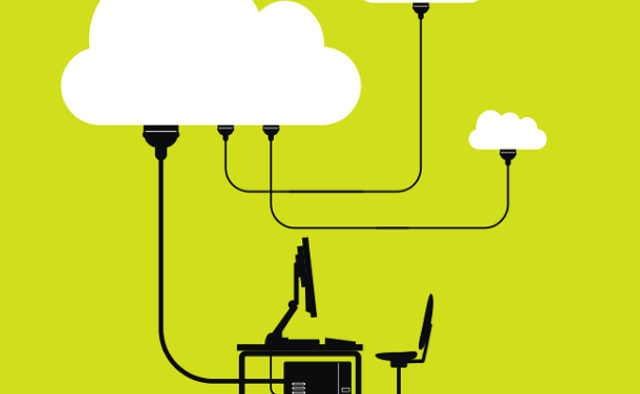Technology is the saviour, not bane, of marketers
Share

In part 4 of our 5-part series on predictions made by SapientNitro in ‘Insights 2012′, a forecast report looking to where the world of marketing will head in the upcoming year, we look at how technology will be changing the way marketers handle digital marketing.
“Planning, delivering and measuring sophisticated multichannel marketing campaigns has never been more difficult,” writes Dan Barnicle, vice president of content management and collaboration at SapientNitro in Munich.
If you are a marketer and fervently nodding your head in agreement, Barnicle shares his tips on why it’s crucial for brands to develop a digital marketing platform that will help centralise assets, group and manage content, reuse processes, connect with external sites and apply advanced analysis. Not only will a well-developed digital marketing platform become a one-stop shop for managing multichannel campaigns, according to Barnicle, it will also help shift costs from developing digital functionality to providing marketing services.
Barnicle tells us the eight areas that the digital marketing toolset will touch on:
1. Building an organisation model.
Strong organisation is paramount to build out the interweaving elements of content, production and technology.
2. Increasing efficiency of campaign production processes.
Inefficient and redundant processes are minimised, and a consistent process – critical to reuse – is rolled out across the organisation. Benefits are seen by all the players involved.
3. Technology governance.
A close working relationship and clear governance structure is essential to overcoming the inevitable technical challenges.
4. Standardising campaign types.
Clients typically develop a core set of campaign types to speed time-to-market and the common technology platform must anticipate and support these types.
5. Managing platform capabilities.
Identifying and enhancing the core management platform capabilities is essential. Content management, digital asset management, social or community presence, marketing and campaign management, measurement and analytics, or consumer data management make up this set of opportunities.
6. Creating a digital production toolkit.
Creation of a set of reusable asset libraries – from copy to HTML to video and more – can deliver a campaign much quicker, with better results.
7. Multichannel campaign delivery.
Combining the asset libraries with the standardised processes and campaign types allows rapid multichannel campaign delivery. From iPhone apps to in-store end-caps to viral videos, multichannel is all about quickly executing cohesive marketing on every appropriate touch point.
8. Campaign management and analytics.
Testing, learning, tracking and adjusting are all tremendously challenging. But for true engagement marketing, it is essential.
Now that you understand the importance of building the ideal digital marketing platform for your company, Sheldon Monteiro, vice president of SapientNitro Chicago warns of the nine things every digital marketer should be prepared for on the platform’s launch day:
1. It feels like you just gave birth.
No matter how much you planned, be prepared to be surprised in the first few months, and not in a pleasant way. There will be issues, and peak business periods and hours will reveal how your platform performs under stress. Smart firms will take a pragmatic approach in the first six months, and engage in continuous stabilising, improving processes and reviewing analytics.
2. New platforms start out with a mortgage.
Going live on time and within budget will likely result in some compromises in the business tools or technical maintainability. View this as a mortgage – it will result in more work. But instead of spending all post-live-release investment on adding new features, it’s important to create a list of operational and technical debt and address items that improve future agility and reduce recurring work.
3. Design, build, and test must evolve to listen, respond, and evolve.
Today, no platform investments lack technology to measure customer experience. Analytics are commonplace, yet all too often firms stumble with listening or responding to their customers. Data may be plentiful, but it isn’t worth a dime if you don’t have an effective process to make changes based on the information.
4. Marketing, business development and operations must converge.
At launch, it’s unlikely that the marketing, business development and operations teams are on the same page. Two suggestions: either force alignment by establishing a firm calendar of ‘global releases’, or consider using iterative, incremental time-boxed practices for enhancements and operations.
5. Time + attention + resources = value.
Invest well.
6. New platforms need help fitting in with established channels, structures and incentives.
Due to organisation and scale constraints, there can easily be incentive misalignment and this is where multichannel will fail. Ensure all channels are synchronised across all brands and that incentives are aligned.
7. Content is not the redheaded stepchild.
Do not neglect content. Consumers will always demand personlised, differentiated content.
8. Additions will be needed – just avoid spit and duct tape.
Think through new feature additions with a custom (not vendor-provided) business case, including what you might learn from smaller investments that can inform future decisions. Also, create a vision: user journeys relayed through video narratives, rich media prototypes placed in a test area of your site to stand trial in the court of customer opinion. While being first with new features may not always be the wisest, being a fast follower is often prudent, and maintaining experience parity with your direct competitors is a cost of business in a digitally connected world.
9. Your platform is a product – sell it.
Digital was not and is not a channel, it’s simply part of business that runs across channels and customer touch points. The trap many firms fall into is that digital is viewed as ‘infrastructure’, or an enabling technology commodity.
The final article of this 5-part series will looks at the trend outlook for marketers, brands and consumers over the next 1 to 5 years.
And in case you missed them:
Part 1: Death of the media planner?
Part 2: Social Media: Let go and listen
Part 3: Context is key to mobile experience









